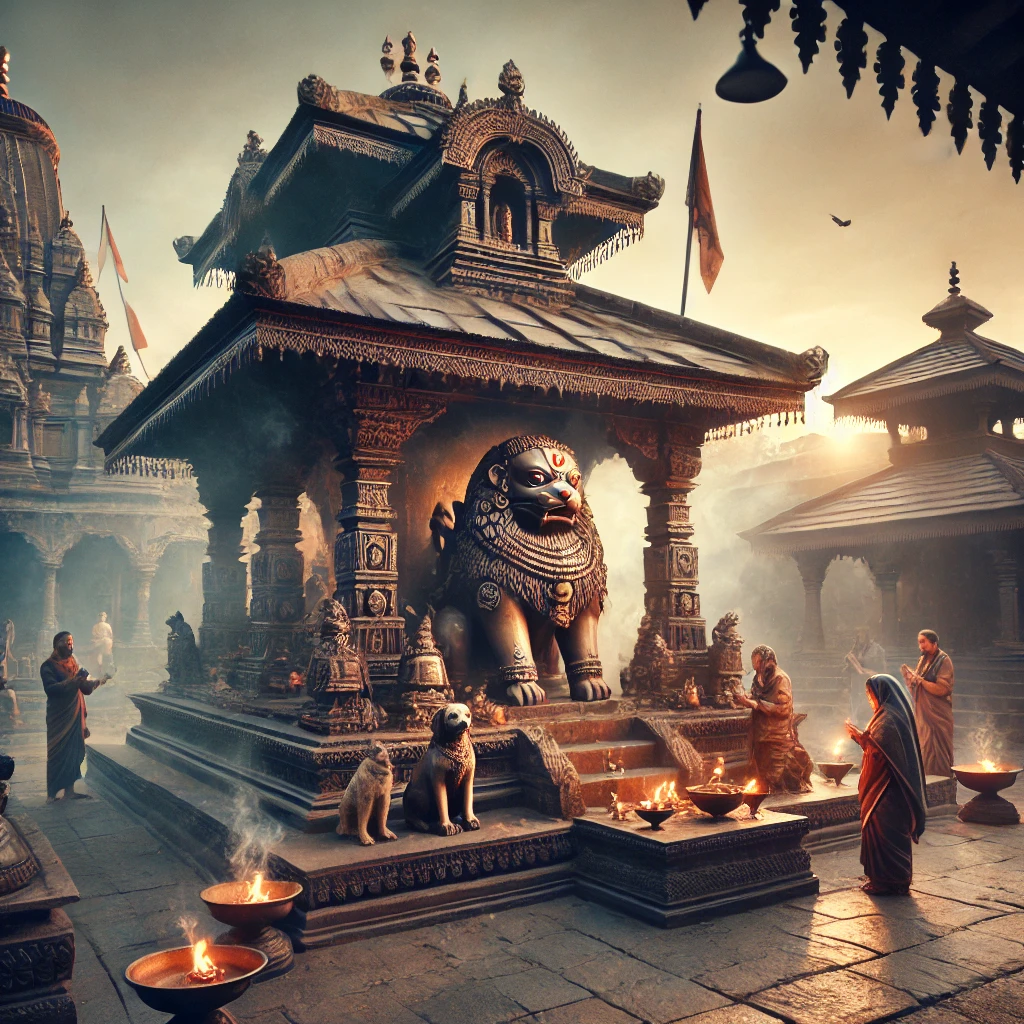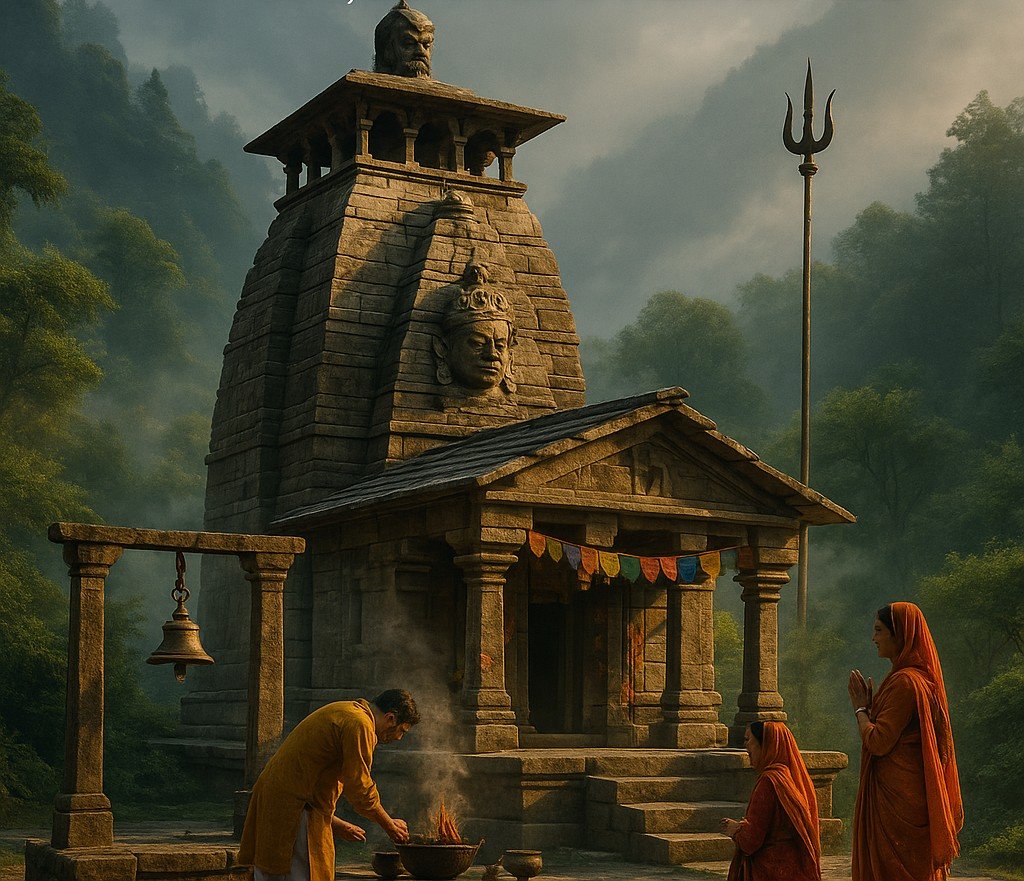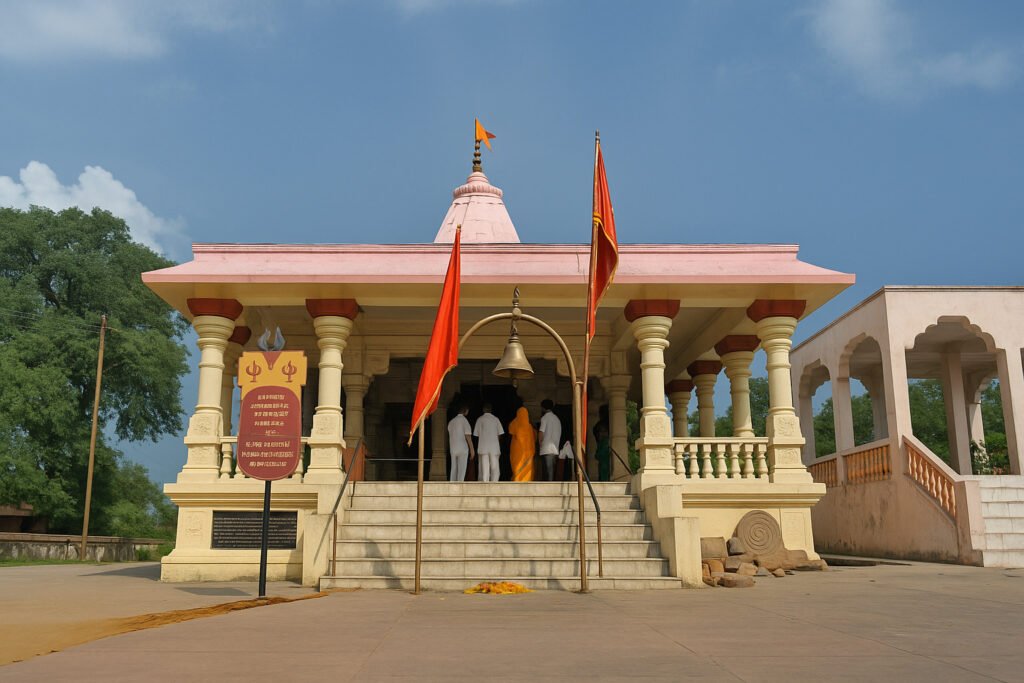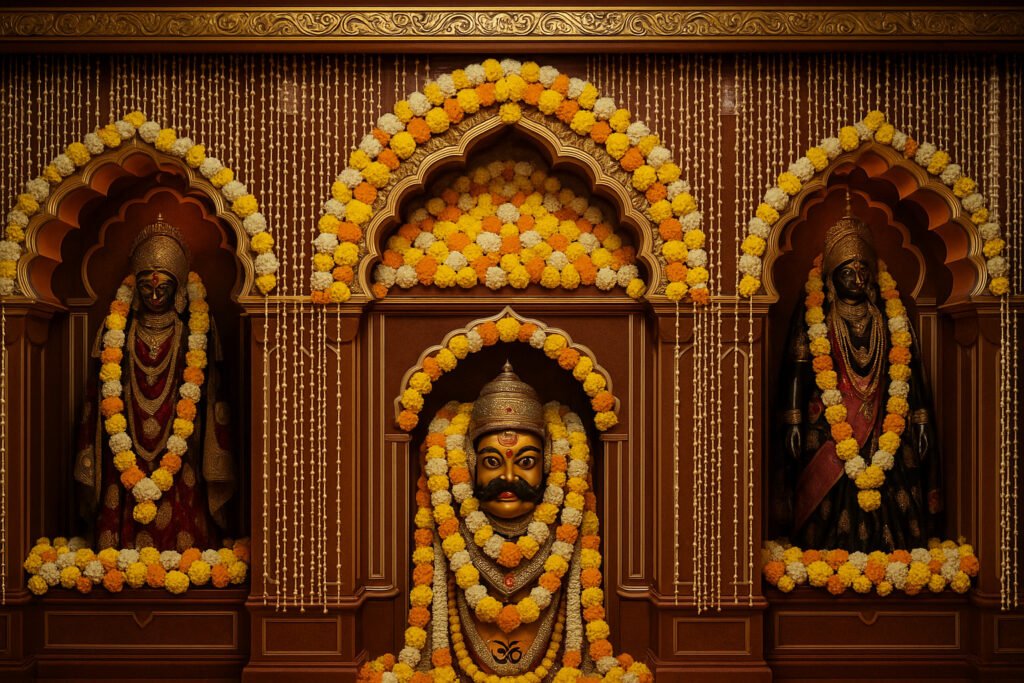Introduction
Nestled in the spiritual landscapes of India, Bhairav Temple is a profound symbol of devotion, mysticism, and heritage. Dedicated to the fierce and protective manifestation of Lord Shiva—Lord Bhairav—this temple draws in thousands of devotees and curious travelers every year. Whether you’re a pilgrim seeking blessings or a traveler exploring sacred spaces, Bhairav Temple offers a transformative experience that combines deep spirituality with architectural brilliance.
Table of Contents
The Historical Significance of Bhairav Temple
Bhairav Temple is steeped in mythological lore and historical reverence. It is believed to have been established during ancient times, with references dating back to the Puranas. Lord Bhairav, known as the guardian of the temple premises and protector of the eight directions, has been worshipped in various regions of India. Over the centuries, rulers and saints have contributed to the temple’s preservation and ritual practices, turning it into a timeless symbol of faith and power.

Geographical Location and Accessibility
There are several Bhairav Temples across India, with famous ones located in Varanasi, Ujjain, and Delhi. The most renowned among them, Kala Bhairav Temple in Varanasi, is easily accessible by train, air, and road. Major nearby cities like Allahabad and Lucknow provide convenient transport connections. Clear signages, local transport, and pilgrimage tours make visiting these temples straightforward and enriching.
ⅰ) Ujjain – Kal Bhairav Temple
- Location: Kal Bhairav Temple is located on the banks of the Shipra River in Ujjain, Madhya Pradesh.
- How to Reach:
- By Air: The nearest airport is Devi Ahilyabai Holkar Airport in Indore, approximately 55 km away.
- By Rail: Ujjain Junction is a major railway station well connected to Mumbai, Delhi, Bhopal, and other cities.
- By Road: Ujjain is accessible via national highways from Indore, Bhopal, and Ahmedabad.
- Local Transport: Auto-rickshaws, taxis, and buses make intra-city travel easy and economical.
ⅱ) Varanasi – Kaal Bhairav Mandir
- Location: Situated in the Visheshwarganj area of Varanasi, close to the famous Kashi Vishwanath Temple.
- How to Reach:
- By Air: Lal Bahadur Shastri International Airport, about 25 km from the city center.
- By Rail: Varanasi Junction (BSB) and Manduwadih (MUV) stations offer extensive train connectivity.
- By Road: Connected via NH-2 and NH-31 to cities like Lucknow, Patna, and Kolkata.
- Local Transport: Auto-rickshaws, e-rickshaws, and cycle rickshaws are commonly used to reach the temple through the narrow lanes of the city.
ⅲ) Delhi – Bhairav Temple
- Location: Located near Pragati Maidan, adjacent to the Purana Qila and close to the National Zoological Park.
- How to Reach:
- By Air: Indira Gandhi International Airport, around 20 km from the temple.
- By Rail: New Delhi Railway Station is about 6 km away.
- By Metro: The nearest station is Pragati Maidan Metro Station on the Blue Line, from where the temple is a short walk.
- By Road: Delhi’s extensive public and private transport network makes access easy from all corners of the city.
- Local Transport: Cabs, autos, and even Delhi’s bike-taxi services are readily available.
Architectural Style and Features

Bhairav Temples reflect a fascinating blend of ancient and regional Indian architectural styles, often embodying the fierce yet protective nature of Lord Bhairava. Most temples follow a Nagara or Dravidian architectural style, depending on their geographic location, with certain elements borrowed from Tantric and Aghori traditions.
Key Architectural Features:
- Sanctum (Garbhagriha): Houses the idol of Bhairava, typically depicted with a fierce expression, armed with weapons, and accompanied by his mount, a dog.
- Shikhara or Vimana: Towering spire above the sanctum, often ornately sculpted with deities and mythical motifs.
- Open Mandapa: A pillared hall for devotees to gather and offer prayers. In Ujjain and Varanasi, the mandapas are simple yet spiritually intense spaces.
- Intricate Carvings: Many temples display carvings of Shiva, Kali, and guardian deities, emphasizing Bhairava’s role as a protector and enforcer.
- Use of Black Stone or Silver: Some idols, like in Ujjain and Varanasi, are adorned with silver masks, while others are crafted from black stone to represent Bhairava’s association with darkness and dissolution.
- Liquor Chamber: A unique architectural addition in some temples (like Ujjain and Delhi), where liquor offered by devotees is stored or directly poured onto the deity.
Deity and Religious Importance
Lord Bhairav, a formidable form of Shiva, is associated with annihilation of evil and time itself. In Tantric worship, he is considered a supreme protector and gatekeeper. Devotees worship him to remove obstacles, attain spiritual wisdom, and safeguard against negativity. Bhairav Temple is a hub for such spiritual seekers, especially during special occasions dedicated to the deity.

Daily Rituals and Temple Schedule
The temple follows a strict ritualistic schedule. Darshan usually begins at dawn and continues until late evening, with breaks during the day. Morning and evening aartis are considered especially auspicious. Devotees offer mustard oil, black cloth, and alcohol—unique offerings that symbolize the fierce yet protective nature of Lord Bhairav.
ⅰ) Kal Bhairav Temple, Ujjain
- Opening Time: 5:00 AM
- Morning Aarti: 5:30 AM – 6:30 AM
- Liquor Offering Rituals: 7:00 AM – 12:00 PM & 4:00 PM – 7:00 PM
- Evening Aarti: 7:30 PM
- Closing Time: 10:00 PM
Unique Ritual: Devotees offer alcohol, which priests pour directly into the deity’s mouth.
ⅱ) Kaal Bhairav Mandir, Varanasi
- Opening Time: 4:00 AM
- Mangala Aarti: 4:30 AM
- Darshan & Offerings: 5:00 AM – 12:00 PM
- Temple Break: 1:00 PM – 3:00 PM
- Evening Aarti: 6:00 PM – 7:00 PM
- Closing Time: 10:00 PM
Unique Ritual: Offerings include mustard oil, black cloth, and coconuts.
ⅲ) Bhairon Mandir, Delhi
- Opening Time: 5:00 AM
- Morning Darshan: 5:30 AM – 12:00 PM
- Offerings: Milk (Doodhiya Bhairon) and Liquor (Kilkari Bhairon)
- Evening Aarti: 6:00 PM – 8:00 PM
- Closing Time: 9:00 PM
Unique Ritual: Separate sanctums for offering milk and liquor; prasad includes alcohol.
Major Festivals Celebrated at Bhairav Temple
The most celebrated occasion at Bhairav Temple is Bhairav Ashtami, which commemorates the day Lord Bhairav appeared. This festival sees grand processions, special pujas, and all-night vigils. Additionally, Shivratri and regional Navratras attract thousands of devotees who seek Bhairav’s blessings for courage, protection, and victory over inner demons.

Local Beliefs and Mystical Stories
Locals believe that Bhairav Temple holds miraculous powers. Many anecdotes tell of divine interventions, cures for ailments, and spiritual awakenings after visiting the temple. Some even say that the deity guards the city where the temple stands, ensuring peace and safety. These mystical stories amplify the temple’s magnetic appeal.
Dress Code and Visitor Etiquette
Visitors are advised to wear modest clothing—preferably traditional Indian attire. Men should avoid shorts, and women are encouraged to wear sarees or salwar kameez. Being a sacred site, maintaining decorum, refraining from loud conversations, and respecting the rituals is essential when visiting Bhairav Temple.
Photography and Mobile Usage Rules
Photography is usually restricted within the sanctum sanctorum of Bhairav Temple. However, outside areas may allow photos. Mobile phones should be kept on silent mode, and taking selfies during rituals is discouraged. Always seek permission from the temple authorities before recording videos.
Best Time to Visit Bhairav Temple
The best time to visit is during winter (October to March), when the weather is pleasant. Religious festivals like Bhairav Ashtami or Mahashivratri offer a chance to witness the temple in its most vibrant state. Weekdays are typically less crowded, making them ideal for peaceful darshan.
Ideal Travel Seasons :
- Ujjain: October to March is the best time due to pleasant weather. Festivals like Kaal Bhairav Jayanti draw large crowds.
- Varanasi: November to February is ideal, coinciding with cultural events like Dev Deepawali and Bhairav Ashtami.
- Delhi: October to March offers the most comfortable climate for temple visits and sightseeing.
Accommodation Options Nearby
A variety of accommodations are available around major Bhairav Temples. Pilgrims can stay in dharamshalas or guesthouses managed by the temple trust, while tourists can choose from hotels ranging from budget to luxury. It’s advisable to book early during peak seasons and festivals.
Local Cuisine and Dining Spots
Near every major Bhairav Temple, local eateries offer a vibrant taste of regional Indian cuisine. In Varanasi, food lovers can savor iconic delights like Banarasi chaat, kachori-sabzi, and malaiyyo during winter mornings. Around Ujjain’s Kal Bhairav Temple, don’t miss the flavorful Ujjaini poha, sabudana khichdi, and sweet treats like jalebi and mawa bati. In Delhi, street food options near the Bhairon Mandir include chaat, parathas, and sweet lassi.
Vegetarian meals dominate the area, often served in hygienic and affordable thali-style restaurants. During festivals, temples also distribute specially prepared prasad, including laddoos, halwa, and khichdi, offering both spiritual and culinary satisfaction.
Nearby Attractions and Day Trips
Travelers can combine a visit to Bhairav Temple with other spiritual or cultural attractions. In Varanasi, the Kashi Vishwanath Temple and Ganga Aarti are must-sees. In Ujjain, Mahakaleshwar Jyotirlinga is a spiritual highlight. These combinations make for enriching day trips.
- Kashi Vishwanath Temple (Varanasi)
- Mahakaleshwar Temple (Ujjain)
- Pashupatinath Temple (Kathmandu)
- Ajanta & Ellora Caves (near Bhairavghad)
Safety and Health Tips for Visitors
- Liquor Offering: Devotees visiting Bhairav Temples in Ujjain and Delhi can bring a small bottle of liquor as an offering, a distinctive ritual linked to Bhairava’s tantric traditions. Some temples provide storage or dispense it during specific times.
- Dress Code: Modest attire is recommended for all visitors. Wearing dark or black clothing is common practice, especially during rituals and festivals associated with Lord Bhairava.
- Respect Rituals: Avoid taking photos or using mobile phones during aarti or abhishek. Maintaining silence and attentiveness shows reverence and preserves the sanctity of the worship.
- Plan Your Visit: Visit during early mornings or late evenings for a quieter, more spiritual experience. Festival days, while vibrant, can be extremely crowded.
- Stay Safe in Crowds: Most Bhairav Temples are located in bustling urban centers. Keep your personal belongings secure and always carry bottled water, especially during the summer or large gatherings. Be cautious of pickpockets in congested areas.
- Health Precaution: If you’re sensitive to incense smoke, loud sounds, or crowd-induced stress, choose non-peak hours and carry any essentials like masks or personal care items.
Sustainable and Responsible Tourism
When visiting Bhairav Temples, travelers are encouraged to practice eco-friendly and respectful tourism. Avoid littering in and around temple premises, use reusable water bottles where possible, and dispose of offerings responsibly. Support local vendors and artisans by purchasing ethically sourced souvenirs. Dress respectfully, follow temple guidelines, and be mindful of cultural sensitivities. Choosing off-peak hours and respecting local traditions ensures a more meaningful and less disruptive experience for both the community and fellow pilgrims.
Conclusion
Bhairav Temple is not just a religious site—it is a journey into the mystical layers of Indian spirituality. From its divine stories and powerful deity to its deep-rooted traditions and vibrant community, every aspect invites you to explore with reverence and open-hearted curiosity. A visit here promises not only blessings but a deeper understanding of faith, culture, and yourself.
FAQs
-
What should I wear while visiting Bhairav Temple?
Visitors are advised to wear modest, traditional clothing—such as sarees or salwar kameez for women and dhotis or kurta-pajamas for men—to respect local customs.
-
When is the best time to visit Bhairav Temple?
The best time to visit is from October to March, with Bhairav Ashtami and Mahashivratri being the most spiritually charged festivals.
-
When is Bhairav Ashtami celebrated?
Typically in the Hindu month of Bhadrapada, Bhairav Ashtami sees grand celebrations with decorations, rituals, fairs, and cultural program.
-
What is the significance of offering liquor at Bhairav temples?
Offering liquor (Madya) is part of Tantric worship (panchamakara). It’s believed the deity absorbs all negativity through this ritual, thereby blessing the devotees.
-
Which temple is famous for Kaal Bhairav?
Kashi Vishwanath Temple, Varanasi, Located in the holiest city of India, Kashi Vishwanath temple in Varanasi is one of the most revered temples in India, dedicated to Kaal Bhairava, who is believed to be the guardian of this holy city



